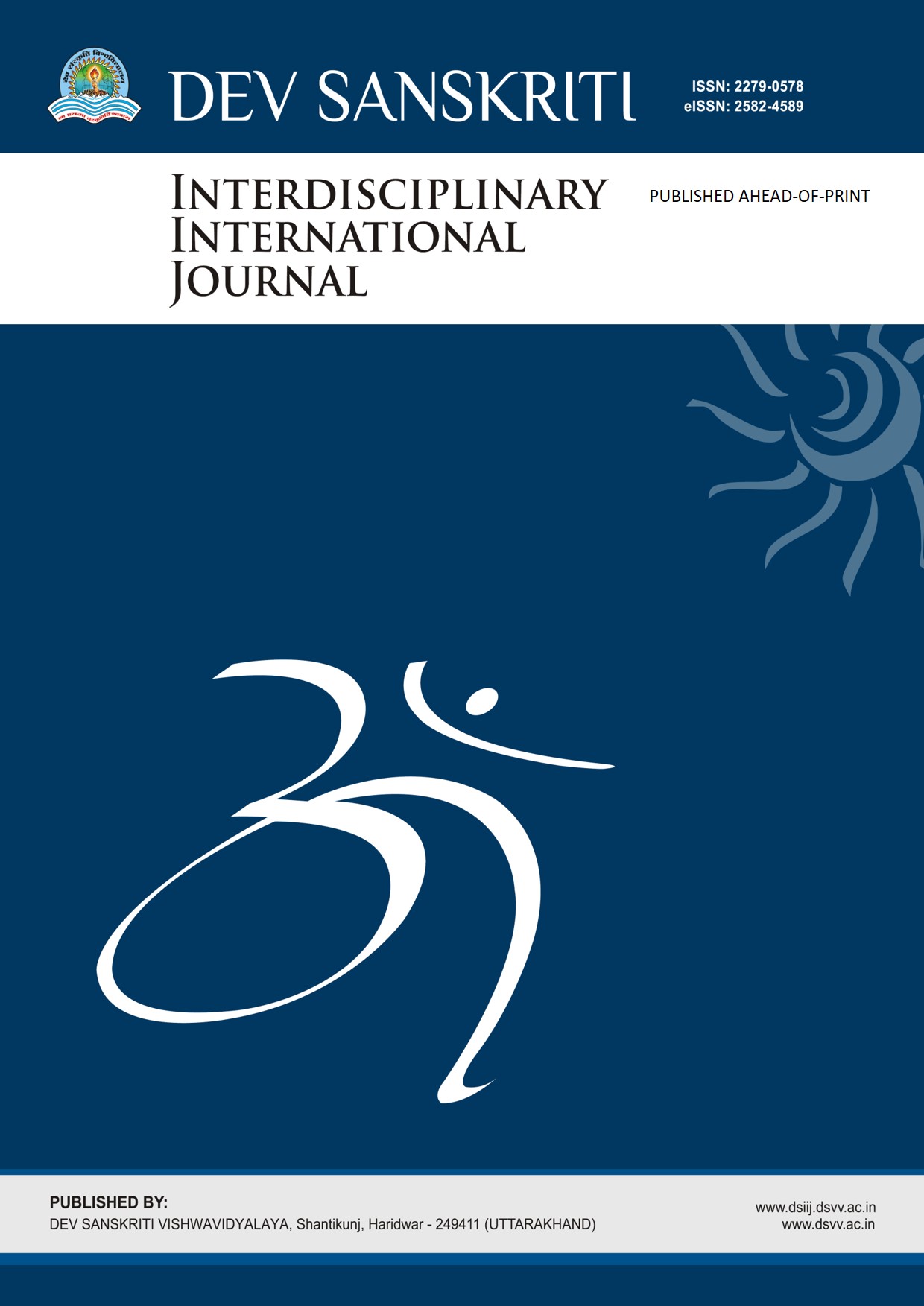Abstract
Upanayana sa?sk?ra (thread ceremony), one among the ?o?a?a sa?sk?ras (sixteen ritual) described in Indian culture - Hindu philosophy, is the right through which a man is initiated into the vows of the guru, the Vedas (wisdom), the restrains (penance), observances, values and vicinity of God (ideals). It is an important sa?sk?ra performed in the crucial adolescent age of an individual, with a view to boost the physical, psychological, moral, social and spiritual life of an individual. In the present scenario, the increasing use of modern gadgets, indiscreet use of social media, inadequate moral education have resulted in lowered concentration levels, diminished memory, deteriorating practical skills besides increased stress-anxiety-depression levels in adolescents.
Upanayana sa?sk?ra is being observed just as a symbolic ceremony in most part of the society who perform it, while only very selected few have understanding of the core intention of it as included in the ancient Indian classics. This article is an earnest attempt to briefly apprehend and analyze a few aspects of the Upanayana sa?sk?ra such as the season and time of performance, the age, the Kaupi?na, Yagnopavita, Sandhy?vandanam, G?yatri japa and such others and their contribution in enhancing the physical, intellectual, psychological and social wellbeing with specific reference to Indian classical Vedic literature. As Vedic literature strongly described, meaningful performance of Upanayana sa?sk?ra followed by regular practice of Sandhy?vandanam will not only enhance scholastic performance but also bring about comprehensive development of an individual and discipline in the society.
References
The Shabdakalpadruma 5/206. Raja Radhakantha Deva,Rashtriya Samskrita Samsthana, Naga publishers, reprint, 2002
Rig Veda Veda V.76.2 as quoted in Hindu Saṃskāras. Rajbali Pandey, Motilal Banarsidas, Reprint, Publishers Private Limited, Delhi. 2006; chapter 2, Page no. 15
Satapatha Brahmana I.1.4.10 as quoted in Hindu Saṃskāras. Rajbali Pandey, Motilal Banarsidas, Reprint, Publishers Private Limited, Delhi. 2006; chapter 2, Page no. 15
Sabra’s commentary on Jaimini Sutra III.1.3 as quoted in Hindu Saṃskāras. Rajbali Pandey, Motilal Banarsidas, Reprint, Publishers Private Limited, Delhi. 2006; chapter 2, Page no. 16
Charaka Samhita Vimansthana 1/21. Pandit Kashinatha Shastri, Dr.Gorakha Natha Chaturvedi. Charaka Samhita of Agnivesa elaborated ‘Vidyotini’ Hindi commentary, Part-I. Reprint, Varanasi: Chaukhambha Bharati Academy, 221001, India. 2005, p.680. Part-II, Reprint, Varanasi: Chaukhambha Bharati Academy, 221001, India. 2006.
Haritha Dharma Sutra XI.1.S quoted in Smriti Chandrika-Samskara Kand of Devan Bhatta; Govt Branch Press Mysore, 1914, page 34.
Hindu Saṃskāras. Rajbali Pandey, Motilal Banarsidas, Reprint, Publishers Private Limited, Delhi. 2006; chapter 2, Page no. 17-24
The Shabdakalpadruma 1/254. Raja Radhakantha Deva, Rashtriya Samskrita Samsthana, Naga publishers, reprint 2002.
Bharuchi, quoted in Viramitrodaya Saṃskāra Prakasha, vol II, Chowkhamba and Jibananda Vidyasagar, uploaded online by Hari Parshad Das, 2014, Page 334.
Yagnavalkya Smṛti I.14 as quoted in Hindu Saṃskāras. Rajbali Pandey, Motilal Banarsidas, Reprint, Publishers Private Limited, Delhi. 2006; chapter 7. Page no. 115
Yagnavalkya Smṛti I.15.as quoted in Hindu Saṃskāras. Rajbali Pandey, Motilal Banarsidas, Reprint, Publishers Private Limited, Delhi. 2006; chapter 7. Page no. 116
Acari R.R., Edited, Apastamba Dharma & Grihya Sutras, Apastamba Dharma Sutras; Prasna 1. Patala 1. Khanda 1 .19; Sri Matham, 2014.
Vedmurti Taponistha Pandit Shriram Sharma Acharya. Gayatri Mahavigyan (sanyukta sanskaran). Revised Edition, Yug Nirman Yojana Vistar Trust, Gayatri Tapobhumi, Mathura. 2014, Page 57

This work is licensed under a Creative Commons Attribution 4.0 International License.

